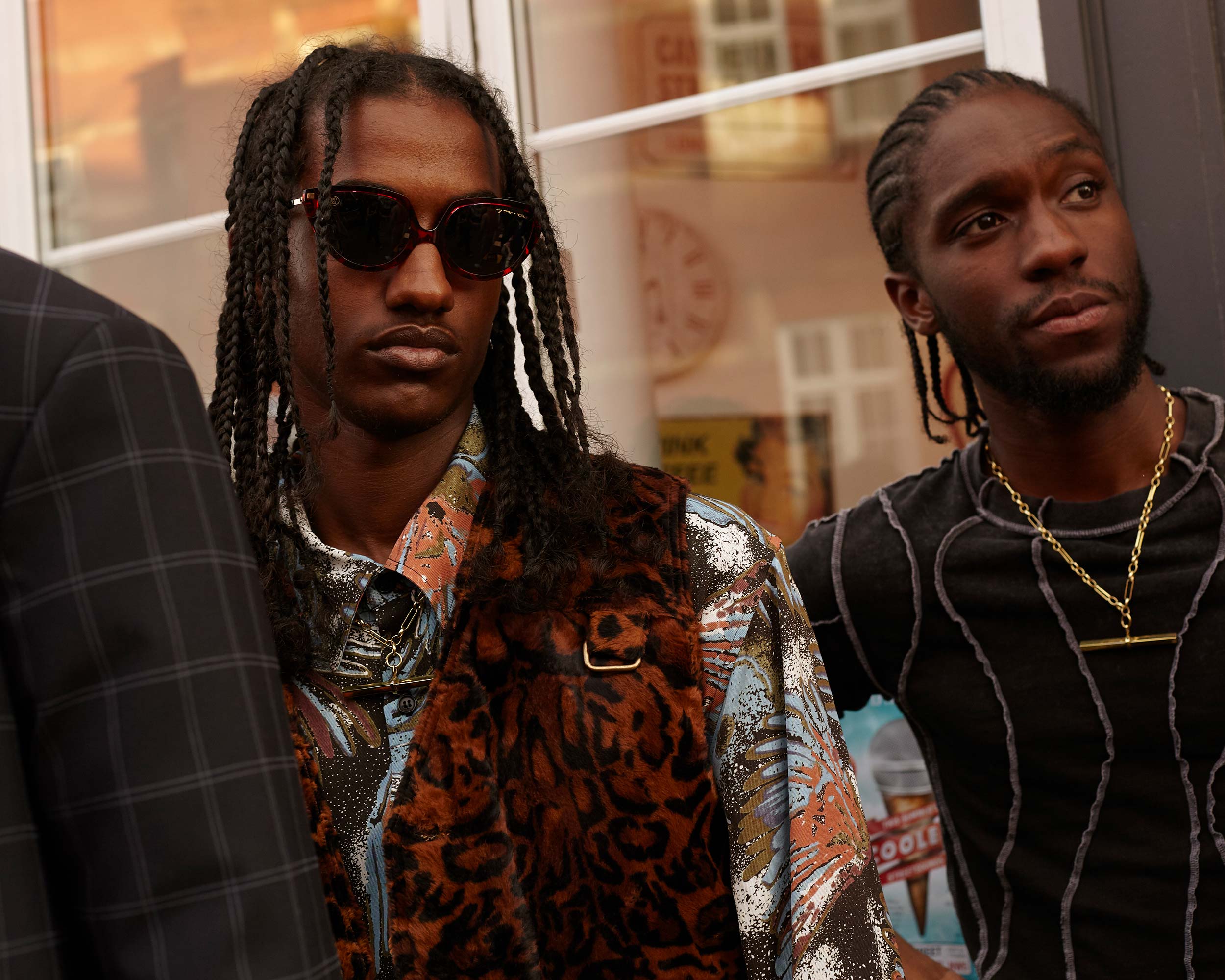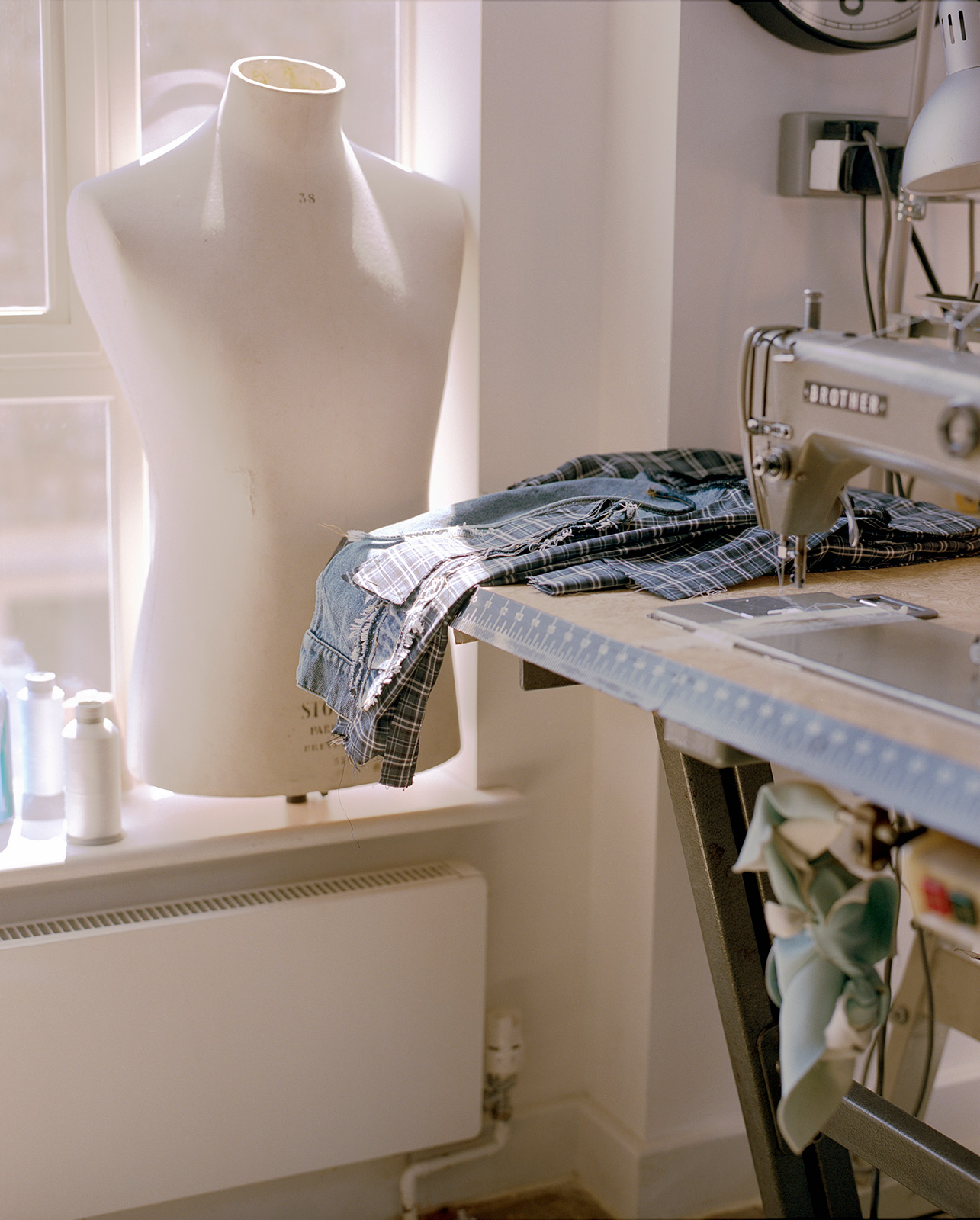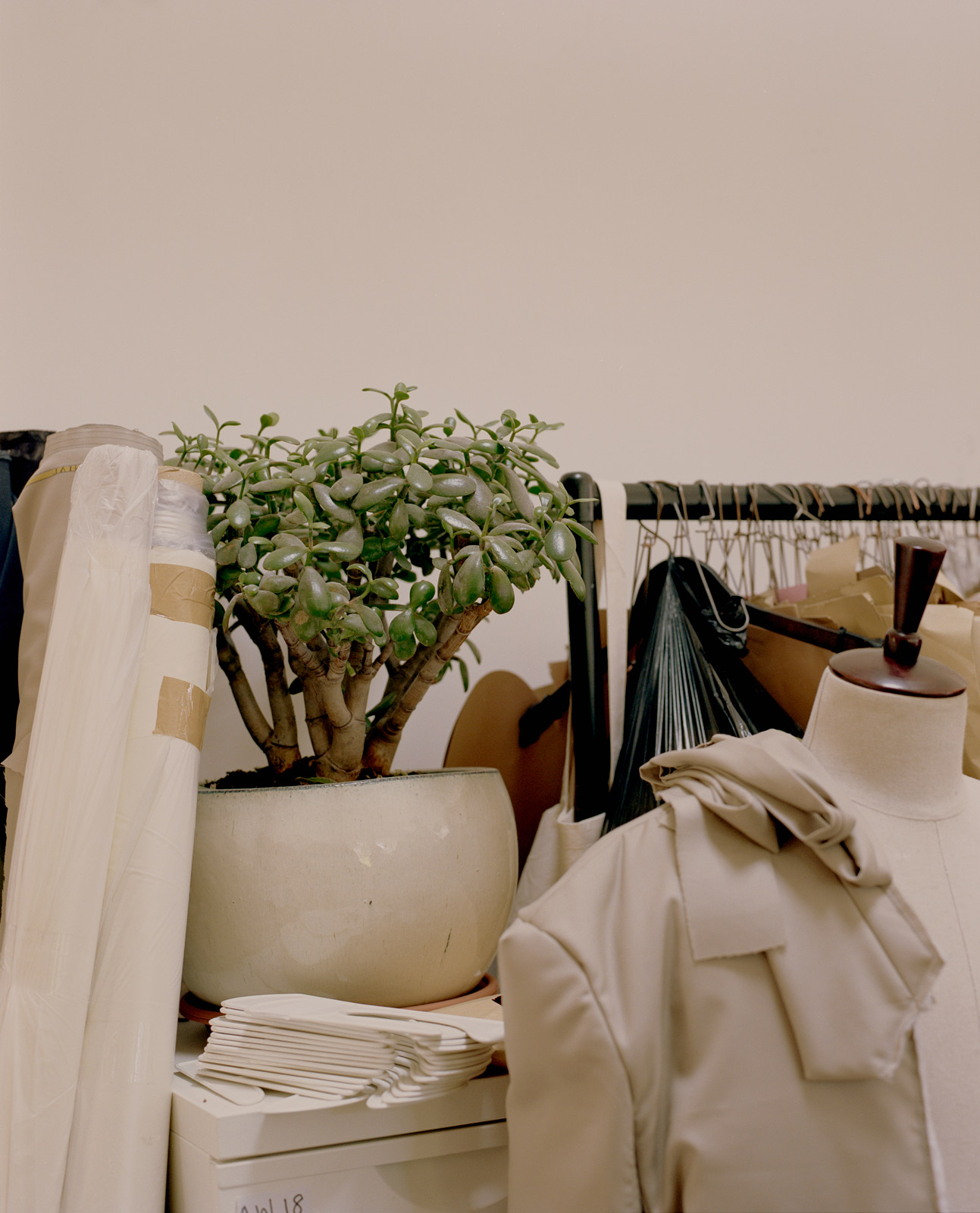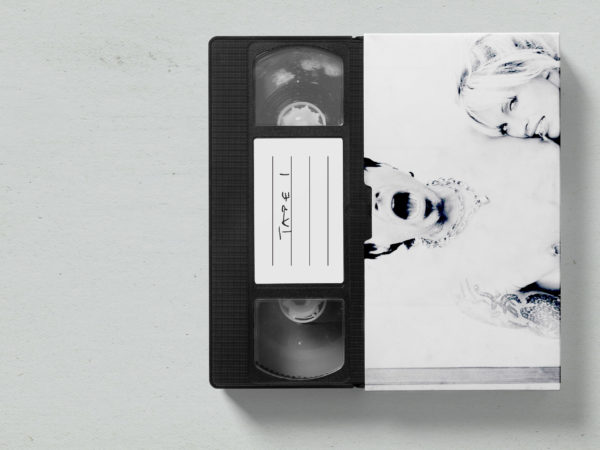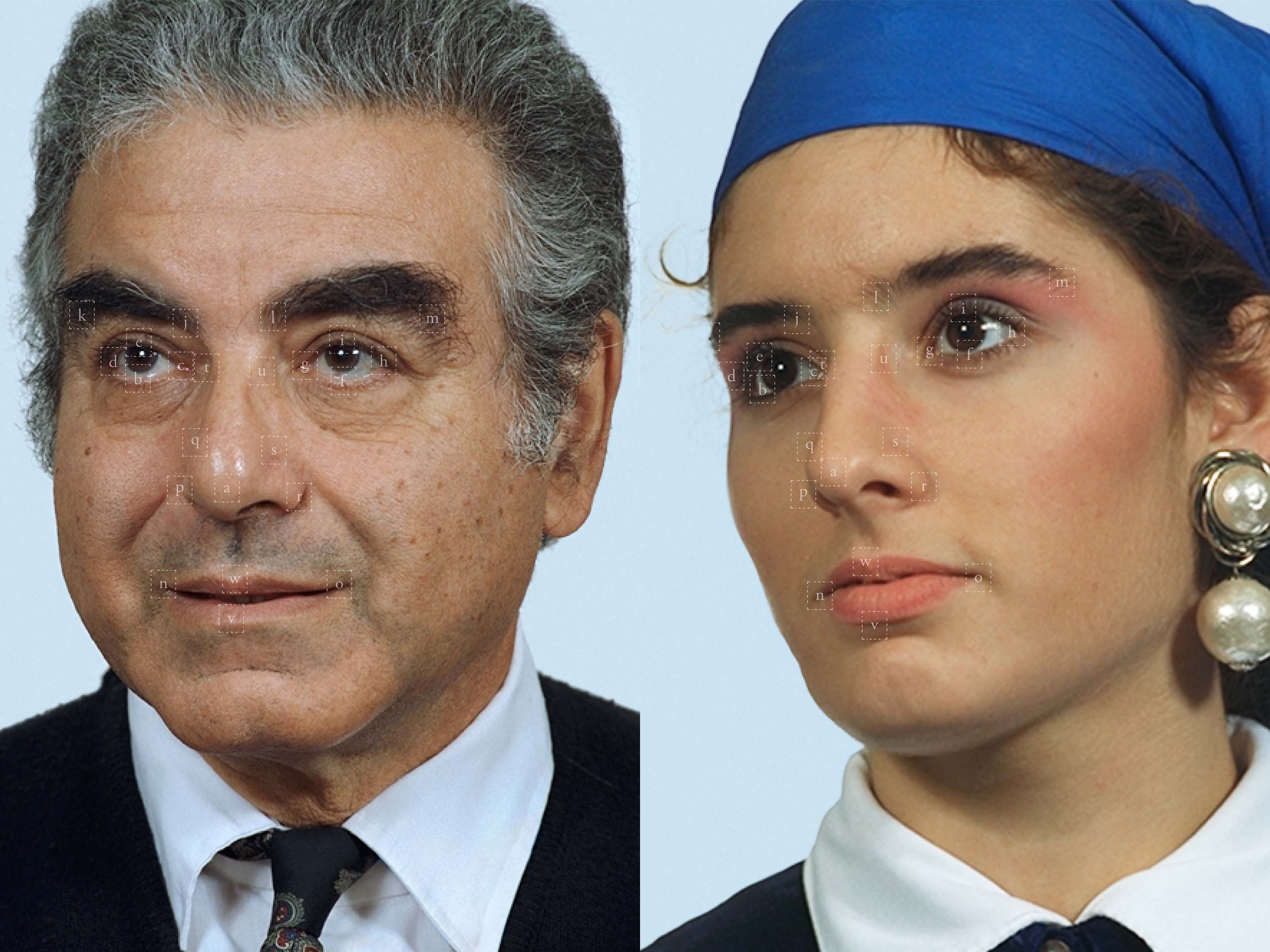Ahead of her Spring / Summer 2019 collection, Document met up with the London-born designer to discuss intuition, music, and the unpredictable, flashy, always dodgy, Martine Rose man.
Martine Rose’s eponymous brand is already a cult label in London and the international fashion circuit, beyond. Each season, her collections are among the most anticipated shows on the schedule. Born and raised in South London, Rose counts her Jamaican roots and a family with strong interests in music and style, among the forces that shaped her path into to design. Music, particularly the big room sounds born of ’90s rave culture, is a constant theme guiding the streetwear designs that have made Rose a phenomenon to be reckoned with, perhaps then, the obvious person to consult on Demna Gvasalia’s menswear line for the iconic Spanish fashion house, Balenciaga.
A term used all too freely to characterize designers, authenticity is at the core of Rose’s process. She’s declared that she is not a planner, opting for late-in-the-game redirects prompted by pure instinct. This sense of intuition has earned her the reputation as one of the must see shows in London, although she is never one to let the rigorous schedule determine whether or not she will be showing. Surprisingly, on the brand’s ten year anniversary, Rose opted for a lookbook to showcase her latest designs, choosing to focus her energy on the recent birth of her son.
On a beautiful summer evening this past week, Rose closed off a residential street inChalk Farm, northwest London, where the likes of Virgil Abloh and fashion’s upper crust merged with surrounding housing residents to view her latest Spring/Summer 2019 collection. Heavy textures of leather and denim were pleasingly contradicted by Hawaiian shirts and leopard prints. The backstage took the unusual location of a local pub, where models emerged in a collection that saw Rose’s strong eye for streetwear and tailoring hit the streets, quite literally. In a world plagued with political unease, social and cultural tension, this was clearly a joyous and light celebration of the capitol Rose calls home. Ahead of the Chalk Farm show, Document spoke with the designer about the curious weight of authenticity, the relentless task of trusting one’s own intuition and the ideal Martine Rose man.
Document—Who is the Martine Rose man? How would you describe him?
Martine Rose—You know every time I’ve tried to describe him, especially in my early career, it doesn’t work. You do these classic business courses, and they tell you very much to identify your target market. And I always found it really hard, and when I tried to do that, it always proved to me that I was wrong. Because I would say 25 to 40 or 18 to 25 and then a 45 or 50-year-old man would be wearing it or a 17-year-old girl. I think that’s the kind of thing that I’ve come to accept and understand about what I do. It’s a really broad spectrum of people—men, women, young, old. There definitely isn’t one guy that I can define.
Document—I gather that your process is quite instinctive.
Martine—Very much so, yeah.
Document—You have a style that informed your collections within the last 10 years. You can see that it is consistent, however, there are very strong influences in every collection. What is the influence in this collection?
Martine—Autumn/Winter 2014 was a defining moment in my career and the way people perceived me. I felt like I really captured something that I wanted to capture and this collection is a broader exploration of that person. Maybe this guy is older, maybe he’s exploring different facets of him more, but he’s this guy that’s into music. It feels like a very London collection. He’s definitely the kind of guy that I like to hang out with. He’s into music, he likes to party. He’s a bit of a man. He’s sexy.
Document—And subcultures, London and clubbing are big influences in your collections.
Martine—Absolutely, always.
Document—How did you grow up in London? Who was the young Martine?
Martine—I grew up in South London. I’ve got a really big extended family, with loads and loads of cousins. We had a central house that was my Nan’s, and at one time or another, we’ve all lived there. It was a second home to everyone and every weekend we used to hang out there. Obviously cousins do influence each other—I was the youngest of my cousins. My older cousin, Darren, was really into rave music. My sister was into reggae and Lover’s Rock. My brother was into dance. All of these different musical influences, and I grew up watching all of them. With my family being Jamaican, there were these Jamaican influences as a sort of heartbeat running underneath it all. So I would say music and style—not fashion—was a great early influence. I didn’t realize it was fashion that I was into until I was much older.
Document—Did you use to dress up to go out?
Martine—Before I used to dress up, I used to watch all of my cousins dressing up to go out.
Document—Do you have any pictures?
Martine—You know what I do. I’ve got a picture of my older cousin Darren—he dressed me up in his old rave gear when I was about nine. And it was all Boy London.
Document—You always choose unusual venues, I love it. It is always sort of out of the comfort zone. Especially the international ones, when we went to the Seven Sisters Market.
Martine—Everyone was like, “Where the fuck is this?”
Document—I had never been there, and it was brilliant. Is there a reason behind it?
Martine—I guess sometimes it’s more to do with the collection, but usually, it’s an experience that I want to create for people. It says a little bit more about me as a person, a little bit more about my process, and what I’m interested in. Or possibly more about the collection. The Seven Sisters Market was because I’ve been in Seven Sisters for 10 years, and I often went to the market. It’s really unknown, and it was being threatened to be torn down. I knew that no one would have seen that before. It’s one of those places that are fewer and fewer in London that are really community based. It’s really special and magical.
Document—You’ve been showing for 10 years—how does it feel now that your designs have gone into the fashion mainstream?
Martine—I don’t really think about it so much. I don’t really participate in it at all. I have social media, but I don’t do it myself. I feel like there are certain filters that you have to put in place just for your own happiness. I don’t really engage with it. I just do what I’ve been doing for a long time and just continue to do it and go with what feels right. I work with people that I love—really talented people. And that’s it. I don’t think more about it.
“My older cousin, Darren, was really into rave music. My sister was into reggae and Lover’s Rock. My brother was into dance. All of these different musical influences, and I grew up watching all of them.”
Document—Although you must have had a bit of a shock when you walk into a Parisian giant like Balenciaga as a consultant.
Martine—Yeah, but even that sounds really grand. It’s actually all about your personal relationships. Demna and I really get on very well, and it’s not much more than that. We connect, and we share lots of influences. We are interested in a lot of the same things, but then we are very different as well. Balenciaga sounds very grand, but it’s really about my relationship with Demna.
Document—That’s something that I saw [in your studio]—everybody was almost like a family, and that’s what I thought was important. I feel like that’s very much you rather than being a fashion brand. A family fashion brand.
Martine—Exactly, family fashion brand.
Document—Because even your stylist is someone that you’ve been working with for a long time.
Martine—Yeah, Tam. We went to arts school together when were eighteen. So we’ve worked together 20 years now, my god! My first label when I left university was with Tam, a tiny one.
Document—Oh, you had a different one? What was it called?
Martine—LMNOP. We didn’t know what we were doing.
Document—You must have learned.
Martine—Hugely—I didn’t know what the hell I was doing.
Document—What was it like? Your first brand.
Martine—It was good. You know what, it sort of blew up very quickly—it was crazy. We had a little following in Japan. But it was a women’s label. Started as eight t-shirts, and then it grew into full collections.
Document—Recently you’ve been doing skirts—are you thinking of expanding more that way or are you sticking with menswear?
Martine—It’s interesting to play with and to challenge myself because you have to challenge yourself and explore different things. I’m not much of a planner, I’m very instinctual. Sometimes it feels right and feels like something I want to explore and then other times not. I’m not going to have a women’s line—there might be women’s pieces that I include, but I’m not going to have a women’s line.
Document—Just out of curiosity, why did you not show last season? With your 10th anniversary, I’d imagine you’d be doing like a massive show, and you did the opposite.
Martine—I just had my son—Reuben—so it wasn’t where my energy was.
Document—The collection was beautiful though. I love that there were influences from all your previous collections.
Martine—Exactly, it was more about that and keeping it very focused and not about this big sort of show.
Document—Tell me about this collection.
Martine—One of the pieces is a rave flyers patchwork shirt. It’s made of old rave flyers patched together.
Document—Where did you find them?
Martine—These are all printed—we’ve printed them on different types of fabric. This is very much a direct influence from Autumn/Winter 2014. There are also these little bags. It’s a bit like the raver influence, all of these accessories. I’ve done a collaboration with Hannah Martin this season, and you can see all the jewelry is influenced by this. We were looking at Hatton Garden market traders, which is a jewelry market in London, but it’s actually an ancient lot of London. It’s all gold dealers, diamond dealers. You go there, and it’s like another world. You know that big bank heist recently? That was in Hatton Garden. It’s a bit of a lawless place. You see every type of bloke—Orthodox Jews, Indian Guys, Old English Blokes. And they’re all dealing in jewelry. If you want to get your gold done, that’s where you go and get your wedding rings and all that shit done. It is a bit dodgy, but that was a big influence of this guy—he’s a little bit unpredictable. He’s a bit of a geezer.
Document—How do you do your research? Do you work with visual references?
Martine—It’s a real combination. There’s a big development on the A/W 14 character. But we also went to Hatton Garden, and I started to develop a picture of this person that I wanted to explore. I also look at a lot of vintage.
Document—So you look at people and see the vibe?
Martine—Yeah, I just looked at all of these guys who are a little bit dangerous and a bit dodgy. A bit like unpredictable—they go out on the weekend, but they’re like wheeler dealers. They’re interesting men. You can see that we’ve done rings, we’ve done necklaces, we’ve done bracelets, we’ve done watches. And it’s all about these guys. A subversion of a Rolex watch, sovereign rings, signet rings.
Document—It won’t be a watch, just the frame of the watch?
Martine—Exactly. It’s like an empty watch. And gold and silver chains—a lot of these are about the mixes of gold and silver. This has built in a character. He’s quite a sexy, dangerous guy. But we also have tailoring in here.
“I just looked at all of these guys who are a little bit dangerous and a bit dodgy. A bit unpredictable—they go out on the weekend, but they’re like wheeler dealers. They’re interesting men.”
Document—The proportions are quite different from what you’ve been doing.
Martine—They’re quite classic in a way. It’s the same shape, but they’re padded in different ways. In one look, the sleeves are padded, and the body is empty. In another, the whole thing is padded. And then we’ve got a much bigger shape that is really padded. Another character that is interesting is one that’s a little goth. We took some influence from a goth kid that found his way onto our influence board. It’s like these little subcultures. The leopard in the collection very much comes from this punk influence as well as the spray paint and the sprayed jeans.
Document—Love the piece that looks like a tracksuit.
Martine—Actually, it’s not a tracksuit. These are trousers, and they’re quite smart, so it’s not casual. They’re actually furry, like pony skin. And the printed shirts—it’s very much about this guy that goes out on the weekends. He is, you could say, a bit flashy.






